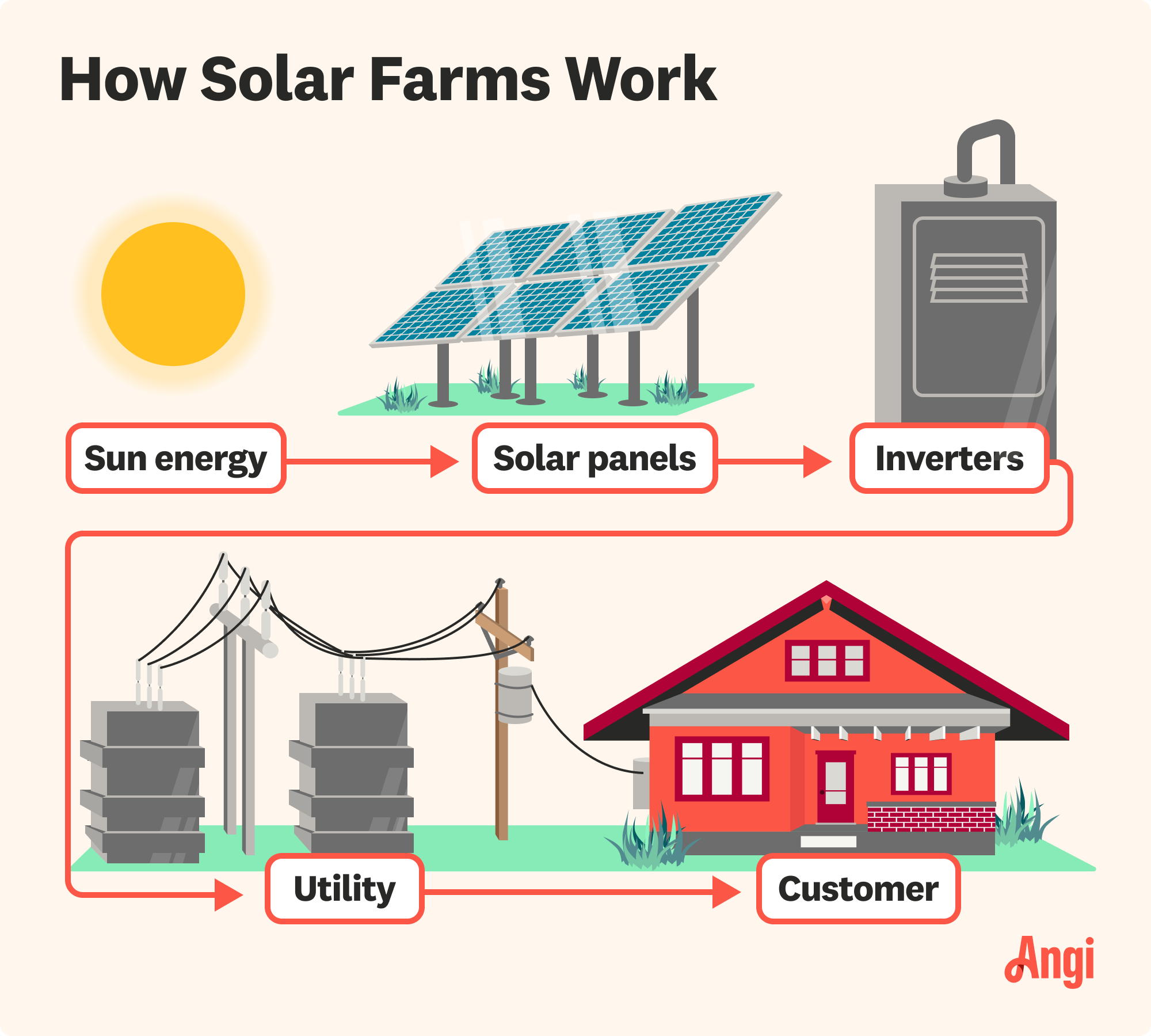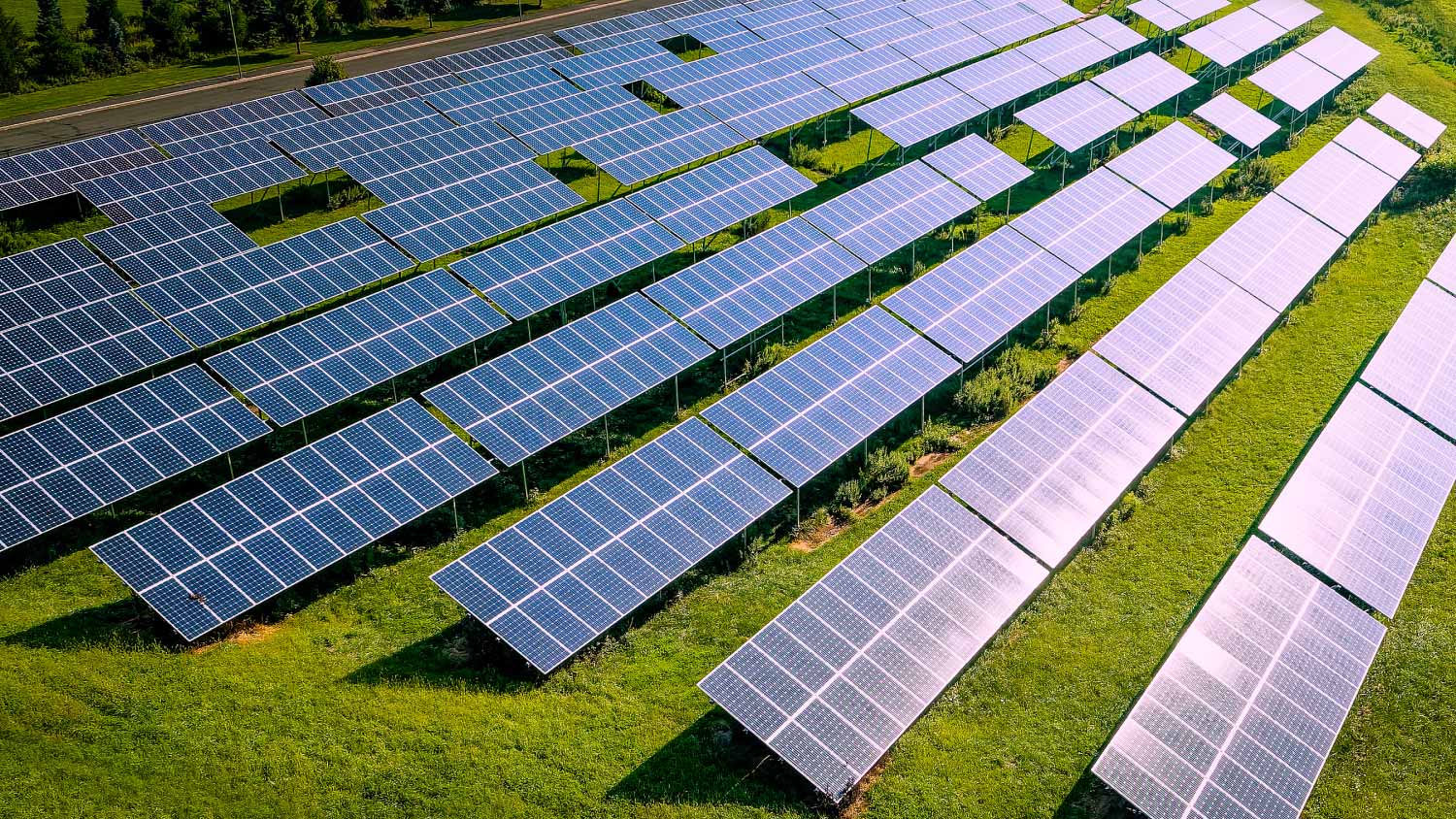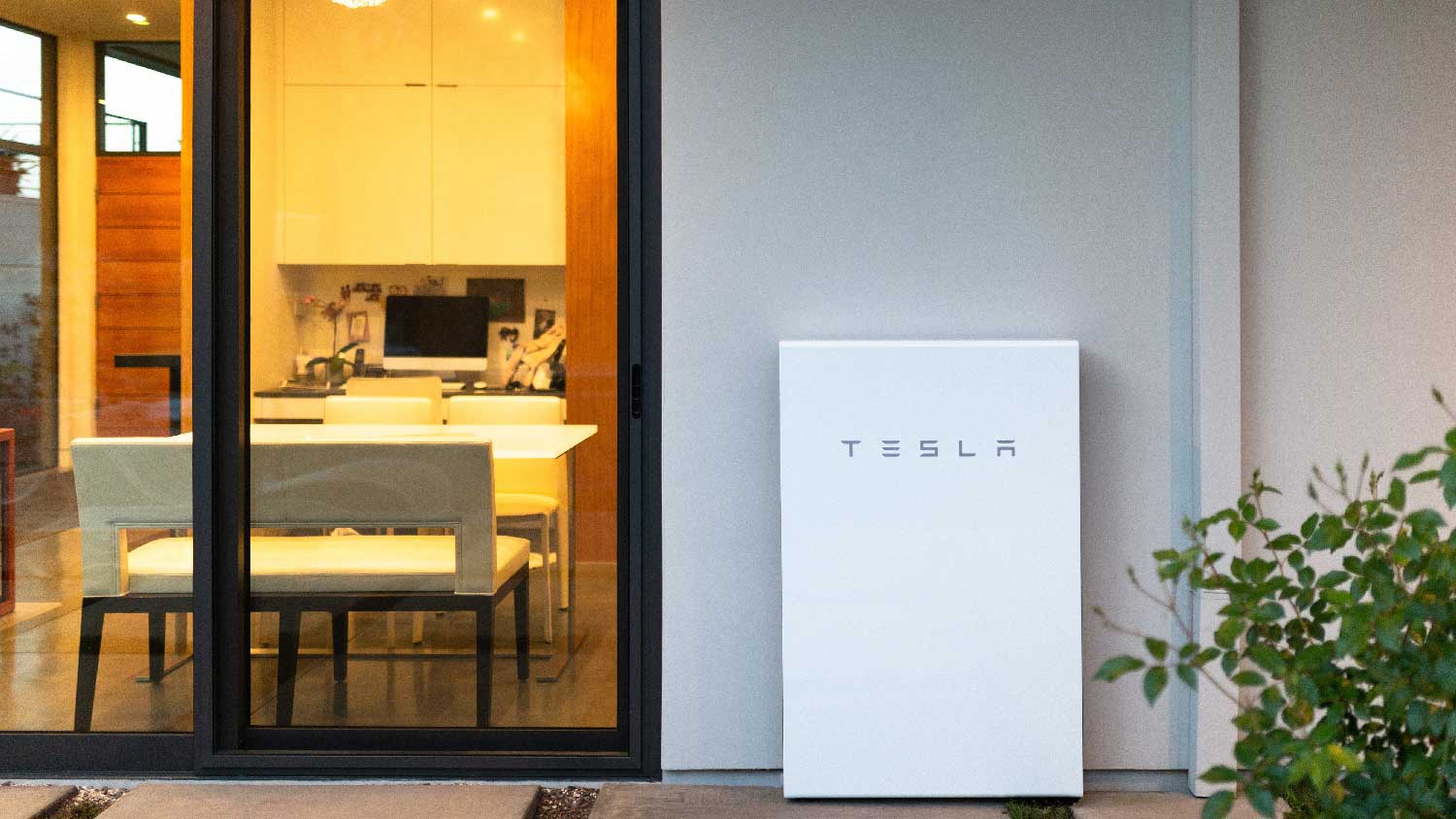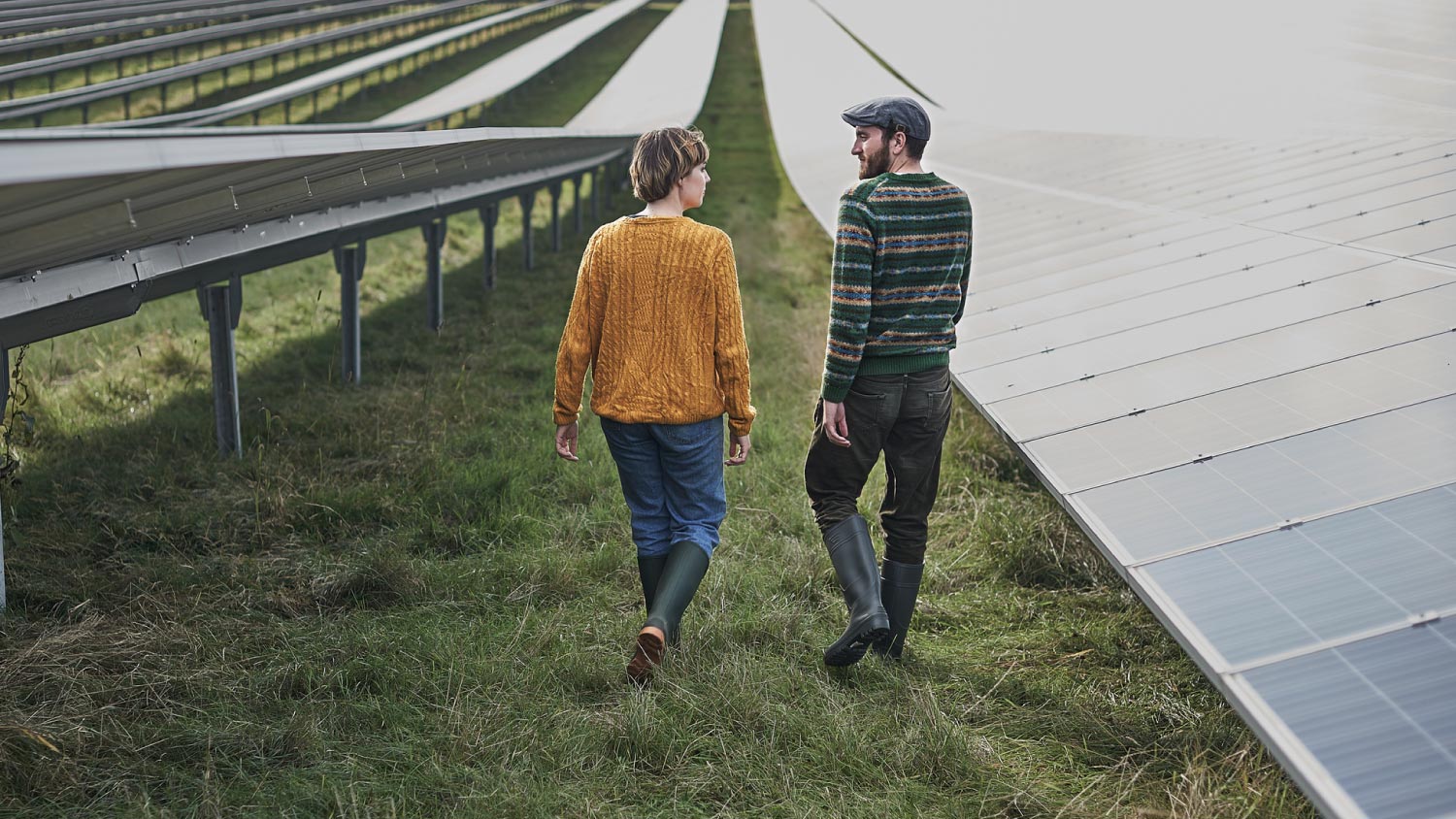
Discover the average solar panel installation cost, key price factors, and expert tips to help you budget for your solar project.
This renewable energy revolution is transforming rays into opportunities


Solar farms are large solar panel installations that generate massive amounts of power.
They can send electricity directly to the power grid or into battery storage for later.
Utility-scale solar farms produce hundreds of megawatts of power.
Smaller community solar farms let residents buy or lease energy for less than utility rates.
Pros include low operation costs and sustainable energy, and cons are high start-up costs, space requirements, and uneven production.
You know what solar power is, but what is solar farming? Solar farms—aka solar parks or photovoltaic (PV) farming—are large-scale solar installations that harness huge amounts of solar energy and convert it into electricity. They range from small community projects to massive installations capable of generating enough power for thousands of homes. Let’s look at solar farms and how this bright idea is changing the landscape of sustainable energy production.
Solar panels are the building blocks of solar farming. Put enough of them together, and you go from a simple solar panel array to a solar farm. Whether they’re monocrystalline or polycrystalline solar panels, they’re made of photovoltaic cells that generate electric current when exposed to sunlight. When solar farming companies install thousands of panels in rows across fields and open spaces, they capture significant amounts of solar radiation and convert it into solar energy.

Electricity made from solar energy can be directly fed into the power grid or stored in batteries for later use. Modern solar farms use various methods to increase solar power efficiency, including sophisticated tracking systems that help the panels follow the sun’s movement throughout the day and increase energy production.
If you’re interested in planting the seeds of renewable energy, local solar panel installers can help you decide whether starting a solar farm is a good idea for you.

There are two main types of solar farms. Let’s illuminate how they reap electricity from sun to socket.
These massive projects can cover hundreds to thousands of acres. The largest utility-scale solar farms produce hundreds of megawatts (MW) of power through active solar energy collection. Most of it goes directly into the power grid and to power homes and businesses. The sheer scale of these farms creates significant energy production levels that can rival traditional power plants but with an eco-friendly twist.
Community solar farms are smaller operations serving a local community or neighborhood. They let residents buy or lease the energy they produce, giving households an affordable way to benefit from renewable energy without installing panels on their own properties. This can cut energy costs for residents, relieve pressure on the public grid, and allow communities to be part of the green revolution.
Solar farms share pros and cons with residential solar panel systems, only on a much bigger scale. Here are some of the positives and negatives of solar farming.
| Pros | Cons |
|---|---|
| Make renewable, sustainable energy | High start-up costs |
| Low operational costs | Require large properties for space |
| Reduce carbon emissions | Only produce power during the day |
| Create jobs | Weather-dependent production |
Other sources of energy like fossil fuels are limited, but solar energy is unending. Harnessing sunlight for electricity reduces reliance on finite energy sources. Similarly, by generating electricity without burning fossil fuels, solar farms help decrease greenhouse gas emissions. This means cleaner air and a healthier environment.
When the sun works overtime, the money can be good, too. Solar farms are relatively inexpensive to run—they have few maintenance expenses and no fuel costs. Local economies often benefit when solar farms come to town. Construction, maintenance, and operation jobs boom, boosting employment numbers and community finances.
It’s not all sunshine, though. Starting a solar farm is a pricey endeavor. The cost of land, solar panels, batteries, and infrastructure can make it hard for some would-be entrepreneurs to get started. However, solar technology is getting more affordable, and solar farm return on investment is better than ever—making it easier to get into solar farming.
Large solar farms need a lot of land and can compete with agriculture and other land-use priorities. However, solutions like dual-use solar farms that combine solar panels and agriculture are helping minimize this downside.
A big dark spot for all sizes of solar installations is that they only make energy when the sun is out, and they need bright, direct sunlight for the highest production. This means no power at night and weather-dependent production during the day. For these reasons, many solar farms also have energy storage systems to provide consistent power at night and on cloudy or rainy days.
Solar farming can turn empty land into a solar field of dreams for those who want to join the renewable energy revolution. While there are some challenges, like land use and initial costs, innovations and the demand for renewable energy are a big draw for companies and investors who can’t wait to help transform our energy landscape.
From average costs to expert advice, get all the answers you need to get your job done.

Discover the average solar panel installation cost, key price factors, and expert tips to help you budget for your solar project.

Discover the Tesla Powerwall installation cost, including average prices, cost factors, and tips to help homeowners budget and save on their Powerwall project.

Get a detailed estimate of solar farm costs. Learn about average prices, key cost factors, and ways to save when planning your solar farm project.

Your panels will not be sun-kissed without a solar panel inspection to ensure the safety of your home and the grid. Here’s what you can expect.

Looking to heat your home with the help of the sun? Learn about different types of solar thermal collectors in this guide.

Are you planning to go solar? This guide will explain the different types of solar inverters and help you choose the best one for your home.